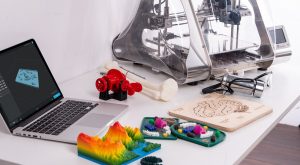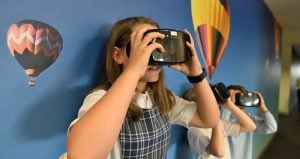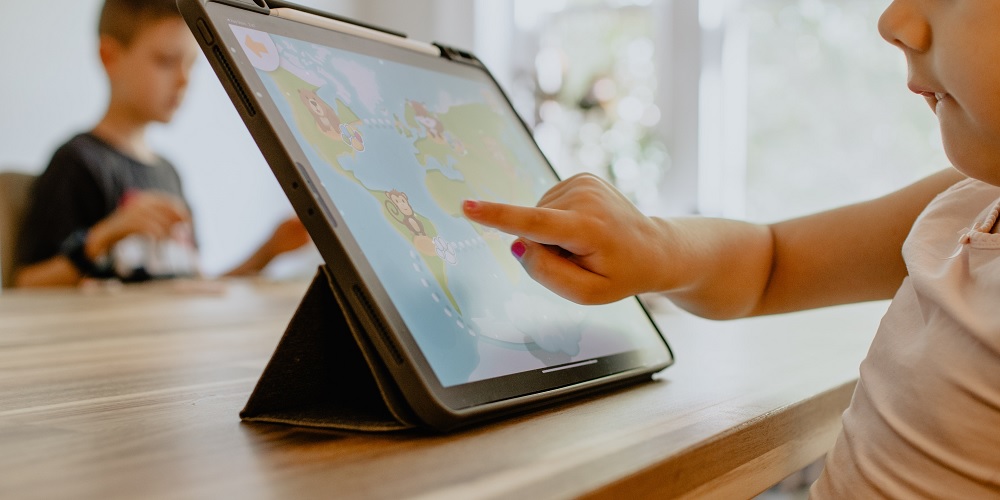Top Trends in Education That Every Educator Should Know
In this article, we will examine the top trends in education that you should know if you are an educator, a teacher, or a tutor. Not surprisingly, technology innovations in teaching aids and changes in learning paradigms are the main themes observable in the sector. The focus is shifting from teaching to learning.
The once class-bound education has shifted into online classes and distance learning. New technologies such as artificial intelligence, augmented realty, and gamification are being used as teaching aids. Students and educators from far corners of the world are meeting for online learning as if they are in the same town. From kids’ education to adult education, everything is changing. We believe this article will help you prepare for what is coming in the field of education. This will help you understand the trends in education currently in progress. You may also understand why the classroom scenes in Dead Poets’ Society are to Gen Z what Benhur is to millennials, a period piece.
Changes in learning paradigms and methodologies
Self-Directed Learning
The famous adult education proponent, Malcolm Knowles, describes self-directed learning as follows. “Self-directed learning describes a process in which individuals take the initiative, with or without the help of others, in diagnosing their learning needs, formulating learning goals, identifying human and material resources for learning, choosing and implementing appropriate learning strategies, and evaluating learning outcomes.” This has become the central theme in 21st century learning management systems not just for adult education but also for young pupils’ education.

Adult education
Experiential Learning
Many an average learner in school suddenly does reasonably well on the job. Experiential learning (ExL) exploits this very educational psychology of humans wherein the brain absorbs better when it is learning by doing. This concept, although a time tested one, has made a revival as a legit teaching strategy in modern education, particularly for school students across levels. Teaching is now less about reading from a prescribed textbook than about delivering an experience that leaves a lasting imprint in the child’s mind. In the world of online teaching and digital learning, where the tutor isn’t physically next to the pupil, experiential learning or learning by doing is a greater challenge. But it is also seen as a reliable teaching strategy in a context where the online teaching professional is held accountable for learning outcomes.
Competency-Based Learning
In a traditional classroom teaching scenario, the course progresses in a timely manner. The aim of the teacher is to cover a certain curriculum every term, irrespective of whether the student has imbibed the lesson. On the other hand, personalized one-on-one tutoring and online tutoring follow a teaching paradigm that is only bound by learning outcomes of the pupils. For example, a math tutor needs to ensure that the student has developed a competency in solving elementary algebra problems before moving to advanced algebra tutoring. The popularity of online learning is linked with a growing awareness around the importance of competency-based learning.
Problem-Based Learning
Educational systems that are focused on tertiary education, particularly vocational education, greatly favor problem-based learning (PBL). Australia is a good example where problem-based learning is hugely popular. Students are presented with open-ended real-world problems or “cases” that would require them to explore the full length of the learning life cycle. That is, understand the issue at hand, acquire the knowledge required to solve it, apply that knowledge, and assess the outcome. Also, there is often a collaboration and communication angle built into problem-based learning through group projects and solution reports or case study report.
Bite sized learning
Bite sized learning is a huge breakthrough in learning paradigms. Here, complex academic topics are delivered in small, easily consumable modules. Each module is anywhere between 10 to 30 mins. Basically, you snack on education and end up learning a lot more. Numerous websites have sprung up to satiate the millennial hunger for bite size learning. They provide courses in a huge variety of topics broken down into small modules. Adult education is seeing a revival due to this teaching strategy. Today, bite sized learning is a burgeoning sector that gives teachers limitless creative opportunities to impart instruction.

Teaching strategy
Blended learning environment
There was a time when baby boomers used to lament that Gen X and Gen Z have been consumed by technology. The argument was that technology bred instant-gratification-seeking behavior that sets back learning. Boomers also worried that it diminished the role of learning by doing and killed social learning. However, with COVID19 looming large, parents and teaching communities around the world have never been more thankful about technology driven learning management systems in the education sector.
There is fresh zeal in the past few months for blended learning that is here to stay. Blended learning is an amalgam of online teaching and in-person teaching. The blended learning approach the universal post-COVID teaching strategy as the world transitions out of total lockdowns. The advantage of blended learning over in-person learning or fully online education is that educators set aside theoretical parts of the curriculum for online teaching. The practicals can continue to be disseminated in person. The best of both worlds is harnessed to create a powerful learning environment.
Integrated Learning Environment
Integrated learning environment (ILE) is a web-based learning concept that is often confused to mean blended learning. Several advanced educational systems around the world are gravitating steadily towards web-based education. The Integrated Learning Environment is a teaching strategy that uses web applications to achieve holistic learning outcomes that traditional blackboard teaching method has often failed to deliver. Integrated learning environment is a wide ranging and multidimensional topic incorporating every aspect of learning and education. It contains online teaching aids, learning aids, diagnostic tools, and administration tools. Among the trends in education, ILE exploits the educational psychology behind interactive learning. As a teaching professional or someone looking to become an online tutor, it is very important that you’re familiar with the concept of integrated learning and how to incorporate it into your teaching strategy.
Genius Hour
The Genius Hour concept is said to have originated at Google from the 80/20 idea, where employees are given 20% of their time at work to do whatever interests them. This idea has now taken the world of education by a storm. The educator dedicates some time daily or weekly towards open-ended, unstructured, and largely unsupervised lessons. The student then drives the lesson plan. There is evidence in education psychology that when learning activity is fueled by the student’s own initiative and interest, it is a huge boost to several learning outcomes over time.
The Genius Hour is a great exercise to build trust between teaching staff and pupils. It is also a teaching aid to encourage innovation. Schoolteachers are limited by curriculum and lesson plan demands. However, private online tutors are in a good position to employ the Genius Hour concept with their students. You can design your own Genius Hour ideas depending on subject and education level.
Here are some examples to get you started. If you are a math tutor online, you can ask your pupils to design their own math problem in a math topic of their choice. Elementary tutors can ask students to make scrap books on their favorite subjects. High school tutors can ask students to conceptualize and create machines or gadgets with at least one moving part. These exercises can be done at home and can even turn online classes into great fun.

Online learning
STEM education vs. STEAM education vs. STREAM education
In the US, STEM (science, technology, engineering, and mathematics) focused curriculum became popular around 2001. It was very quickly adopted by all the top educational systems around the world including the UK, Australia and China. As of today, it encompasses a wider range of disciples such as chemistry, computer and information technology sciences, engineering, geosciences, life sciences, mathematical sciences, physics and astronomy, social sciences (anthropology, economics, psychology, and sociology). A school curriculum centered around STEM education was strongly believed to inculcate critical thinking, idea generation and innovation in young minds, and rightly so.
More recently, an “A” was introduced in STEM to integrate Arts subjects in the curriculum. Thus STEAM education was born. Education policy makers felt that a STEAM approach was needed to develop empathy in students. They believed this was a necessary element in innovation and design thinking.
The latest on the matter is the inclusion of “R” to integrate Reading into the curriculum making it STREAM education. The idea is that literacy and communication is the foundation on which all other disciples are built on.
The implication of this discourse on teaching is that increasingly well-rounded professionals are being sought and not just subject area specialists. This is particularly true with the added challenge of student engagement in online classes. A nerdy math tutor is great. A math tutor who can throw in snippets about how Einstein was dyslexic or how Pythagoras led a cult that worshipped numbers and would not eat beans, would rock.
International Education
Student mobility across borders was at its highest in 2019 with international student enrolment growing year over year in top education destinations (until the pandemic hit). That said, education is increasingly globalized in a way that goes beyond international student mobility. In the past, one needed a student visa, specific qualifications, and financial arrangements to obtain an international education. Nowadays the only thing needed is digital citizenship. In other words, if you have the internet, you can access an international education through distance learning wherever you are in the world. Student communities are often cross-border. Likewise, it has been observed that students are more open to international interactions and culture appreciation.
Globalization of education not only applies to students but also to teaching staff. They can now be based anywhere in the world. This is particularly evident in the sphere of online teaching. A pupil in the United States is quite possibly taking online tutoring sessions from a Polish math tutor. In fact, in a post pandemic era, a cloud-based international school or a college isn’t difficult to imagine.
Disruptive technologies in education
Exam Management
The way we view exams and test taking is on the verge of a sea change. First, top competitive exams (like SAT, ACT, GMAT and GRE) have already moved online in pretty much all top educational systems around the world both in the west and in the east. Now even at the institute level, exam management systems are being put in place to streamline everything from question paper setting, issuing digital hall tickets to paper correction and grading. The main technology tool behind exam management systems is Blockchain Technology. This is particularly relevant in student verification and prevention of exam fraud.
Artificial Intelligence and machine learning in education
We may be a long way away from a humanoid robot taking online classes. But artificial intelligence (AI) and machine learning (ML) have already become top trends in education in the form of interactive bots and voice assistants on online learning apps. AI and ML technologies are being employed extensively to personalize learning apps for students. For example, language tutoring apps have interactive response systems. They guide the learner by offering instant feedback and providing targeted pathways to reach a goal. AI and ML are also used to provide smart teaching aids for paper correction and plagiarism checks. As you can imagine, there are boundless possibilities of how artificial intelligence can change the face of education. And it looks as though we have only just scratched the surface.

Teaching aids
Augmented reality in education
Augmented reality is a hot topic that educators are increasingly becoming aware of and actively employing to improve learning outcomes of students. Materials aided by augmented reality are particularly relevant in distance learning environments and online tutoring contexts. But what is augmented reality? For example, medical students can scan an anatomy model with their smartphones and get additional information in the form of text or additional 3D images to augment the experience provided by the physical model itself. Once again, the possibilities of learning through augmented reality are endless.
Gamification
An early-2000s computer game called The Age of Empires taught kids of that generation more about the history of civilizations, conquest, and anthropology than any textbook could ever have managed. Of course, there were some fallacies, like 3 men in a village could somehow reproduce and build an entire race if they had a priest amidst them. Then again, The Age of Empires wasn’t developed to deliver a lesson in history. But you get the idea of just how powerful a learning management system tool gaming can be. This is the concept that gamification of education explores. The idea is still at its nascent stage but has the potential to revolutionize online learning.
One wonders what would happen to educators around the world should all learning move to games. Would teaching professionals move to game design? Food for thought.
A 21st Century Teacher
Looking at all the top trends in education that we are witnessing today, the role of a teacher isn’t what it used to be just 20 years ago. Education has seen some disruptive innovations in the last decade. The world has readily adopted some of them, largely in response to the pandemic. What we know for now is that traditional “chalk and talk” teacher-centric teaching style has evolved into a more student-centered approach to learning.
The class-bound education system has given way to online classes and distance learning. Artificial intelligence and augmented realty are being used as teaching aids. Students and educators from anywhere in the world are pursuing online learning completely unaware of the great distances. These trends in education are affecting all levels of education, from grade-level education to adult education. A new generation of global, digitally savvy, entrepreneurial spirited and creative bunch of Gen Zs and Gen Alphas need to be given an education. Predictably, that is going to usher in another wave of changes in education. We hope this article has given you a glimpse of what is happening.
Related Topics to Trends in Education
World’s Leading Higher Education Systems: A Guide to International Students and Educators
